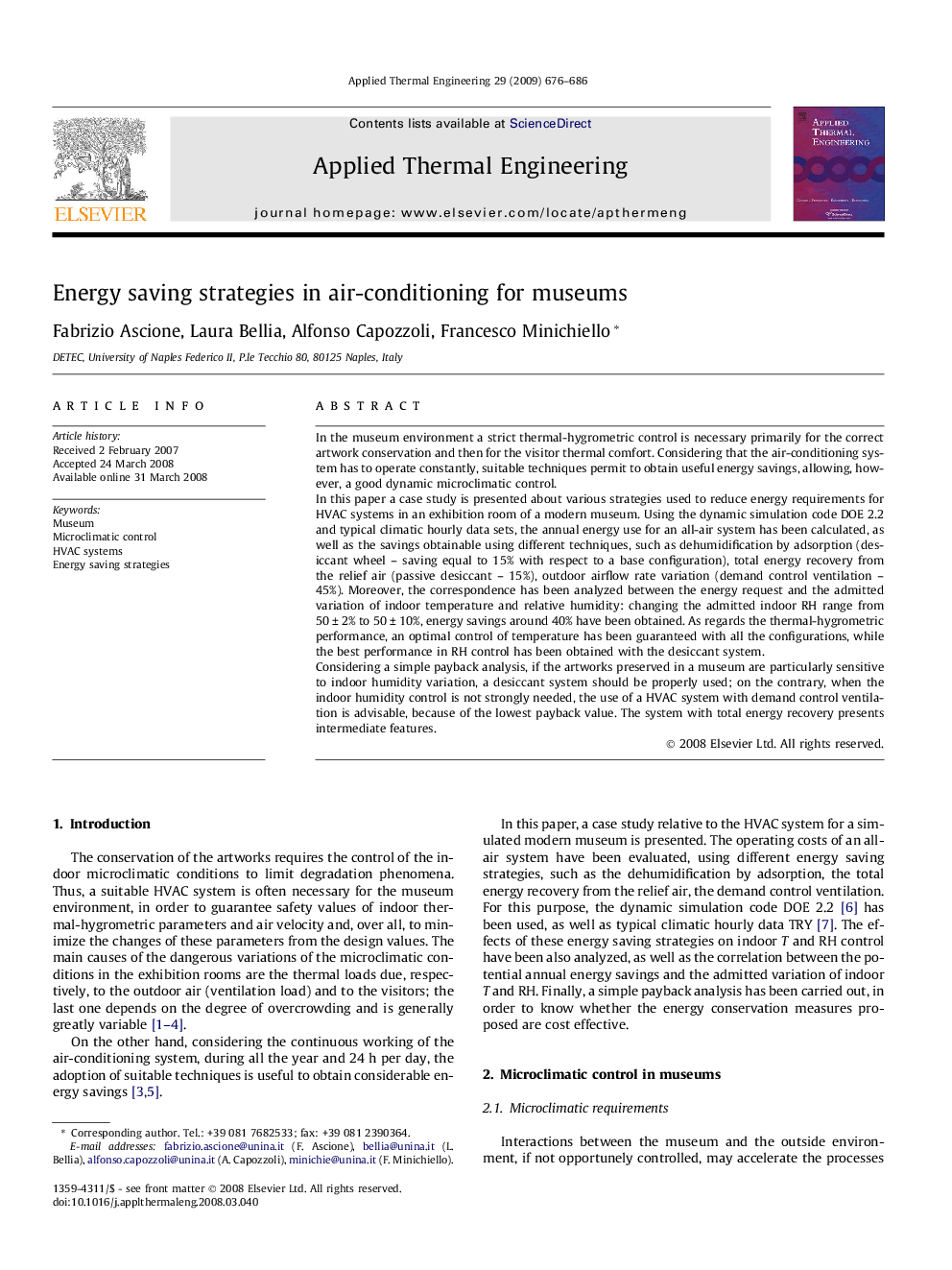| کد مقاله | کد نشریه | سال انتشار | مقاله انگلیسی | نسخه تمام متن |
|---|---|---|---|---|
| 649192 | 884647 | 2009 | 11 صفحه PDF | دانلود رایگان |

In the museum environment a strict thermal-hygrometric control is necessary primarily for the correct artwork conservation and then for the visitor thermal comfort. Considering that the air-conditioning system has to operate constantly, suitable techniques permit to obtain useful energy savings, allowing, however, a good dynamic microclimatic control.In this paper a case study is presented about various strategies used to reduce energy requirements for HVAC systems in an exhibition room of a modern museum. Using the dynamic simulation code DOE 2.2 and typical climatic hourly data sets, the annual energy use for an all-air system has been calculated, as well as the savings obtainable using different techniques, such as dehumidification by adsorption (desiccant wheel – saving equal to 15% with respect to a base configuration), total energy recovery from the relief air (passive desiccant – 15%), outdoor airflow rate variation (demand control ventilation – 45%). Moreover, the correspondence has been analyzed between the energy request and the admitted variation of indoor temperature and relative humidity: changing the admitted indoor RH range from 50 ± 2% to 50 ± 10%, energy savings around 40% have been obtained. As regards the thermal-hygrometric performance, an optimal control of temperature has been guaranteed with all the configurations, while the best performance in RH control has been obtained with the desiccant system.Considering a simple payback analysis, if the artworks preserved in a museum are particularly sensitive to indoor humidity variation, a desiccant system should be properly used; on the contrary, when the indoor humidity control is not strongly needed, the use of a HVAC system with demand control ventilation is advisable, because of the lowest payback value. The system with total energy recovery presents intermediate features.
Journal: Applied Thermal Engineering - Volume 29, Issue 4, March 2009, Pages 676–686